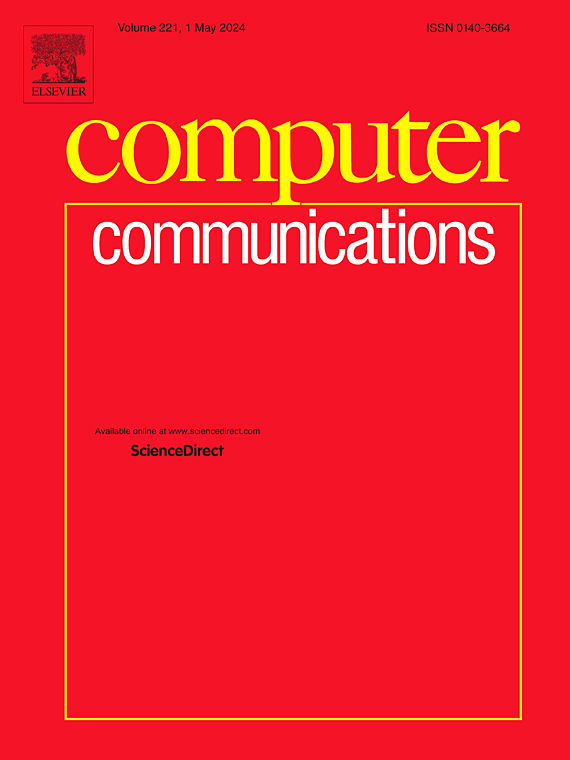Blockchain-based VANET edge computing-assisted cross-vehicle enterprise authentication scheme
IF 4.5
3区 计算机科学
Q1 COMPUTER SCIENCE, INFORMATION SYSTEMS
引用次数: 0
Abstract
Vehicular Ad hoc Network (VANET) is considered one of the feasible solutions to improve the efficiency and safety of modern transportation systems, and it provides new opportunities for creating a safe and efficient traffic environment. In recent years, this technology has attracted extensive attention from the academic community. However, VANET is an open network with frequent information interaction, and users are vulnerable to security and privacy threats. The existing schemes mainly consider the identity authentication of vehicles in vehicle enterprises (VEs). Due to concerns about the leakage of core data, VEs lack the motivation to establish a cross-vehicle enterprise identity authentication framework. Based on the above analysis, we propose a cross-vehicle enterprise authentication architecture by designing a two-stage certificate generation mechanism where certificate authority (CA) and VEs cooperate to generate identity credentials for vehicles. To address the concerns of VEs, we establish distributed trust and enable information sharing across VEs by introducing a consortium blockchain composed of car companies, CA, and pseudonym certificate authority (PCA). Considering the need for vehicles to access road traffic information, we use a public blockchain to store public information, and the practical byzantine fault tolerant (PBFT) algorithm is used to reach consensus. Instead of using computationally complex bilinear pairing and mapping-to-point hashing operations, the proposed scheme uses an elliptic curve cryptosystem (ECC), considering the limited hardware resources of the vehicle and RSU. In addition, our scheme integrates edge computing to solve complex computing tasks that cannot be performed locally and further reduces system latency. Security analysis and performance analysis show that our scheme has better performance than existing schemes in terms of security, computational overhead, and communication overhead.
基于区块链的VANET边缘计算辅助跨车企业认证方案
车辆自组织网络(Vehicular Ad hoc Network, VANET)被认为是提高现代交通系统效率和安全性的可行方案之一,为创造安全高效的交通环境提供了新的机遇。近年来,该技术引起了学术界的广泛关注。然而,VANET是一个开放的网络,信息交互频繁,用户容易受到安全和隐私威胁。现有方案主要考虑整车企业车辆的身份认证问题。由于担心核心数据泄露,企业缺乏建立跨车企业身份认证框架的动力。基于上述分析,我们通过设计一种两阶段证书生成机制,提出了一种跨车辆企业身份验证体系结构,其中证书颁发机构(CA)和ve合作为车辆生成身份凭证。为了解决ve的问题,我们建立了分布式信任,并通过引入由汽车公司、CA和假名证书颁发机构(PCA)组成的联盟区块链,实现了ve之间的信息共享。考虑到车辆访问道路交通信息的需要,采用公共区块链存储公共信息,并采用实用的拜占庭容错(PBFT)算法达成共识。考虑到车辆和RSU有限的硬件资源,该方案使用椭圆曲线密码系统(ECC)代替计算复杂的双线性配对和映射到点的哈希操作。此外,我们的方案集成了边缘计算,以解决无法在本地执行的复杂计算任务,并进一步降低系统延迟。安全性分析和性能分析表明,我们的方案在安全性、计算开销和通信开销方面都优于现有方案。
本文章由计算机程序翻译,如有差异,请以英文原文为准。
求助全文
约1分钟内获得全文
求助全文
来源期刊

Computer Communications
工程技术-电信学
CiteScore
14.10
自引率
5.00%
发文量
397
审稿时长
66 days
期刊介绍:
Computer and Communications networks are key infrastructures of the information society with high socio-economic value as they contribute to the correct operations of many critical services (from healthcare to finance and transportation). Internet is the core of today''s computer-communication infrastructures. This has transformed the Internet, from a robust network for data transfer between computers, to a global, content-rich, communication and information system where contents are increasingly generated by the users, and distributed according to human social relations. Next-generation network technologies, architectures and protocols are therefore required to overcome the limitations of the legacy Internet and add new capabilities and services. The future Internet should be ubiquitous, secure, resilient, and closer to human communication paradigms.
Computer Communications is a peer-reviewed international journal that publishes high-quality scientific articles (both theory and practice) and survey papers covering all aspects of future computer communication networks (on all layers, except the physical layer), with a special attention to the evolution of the Internet architecture, protocols, services, and applications.
 求助内容:
求助内容: 应助结果提醒方式:
应助结果提醒方式:


